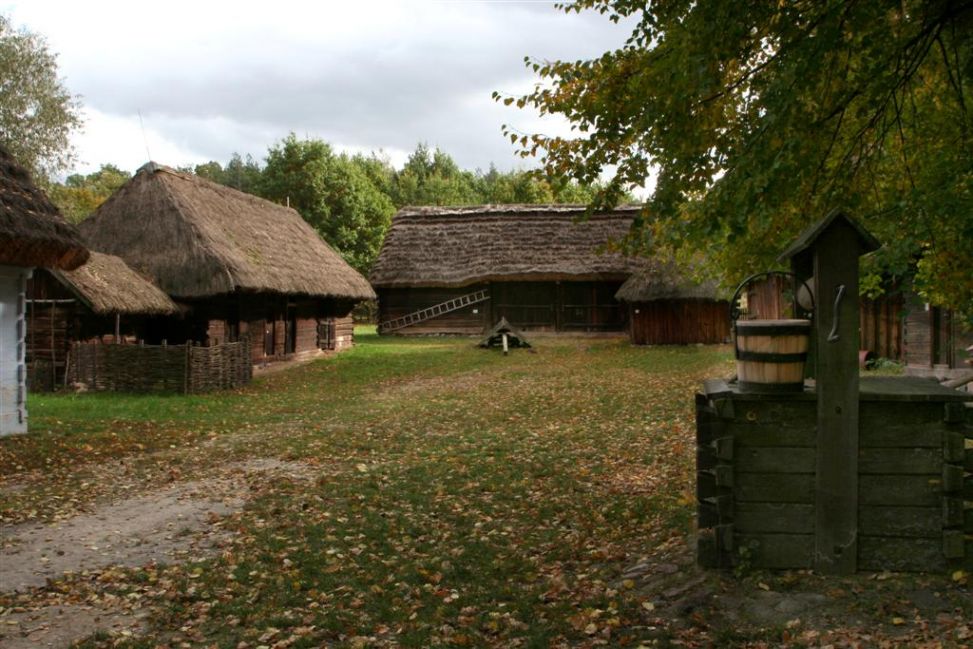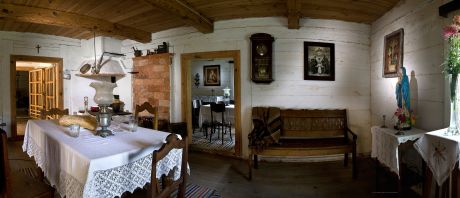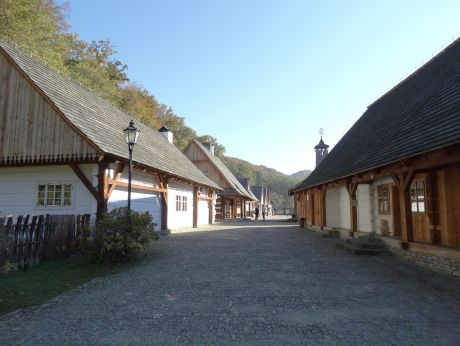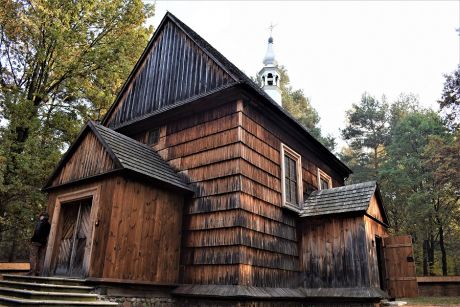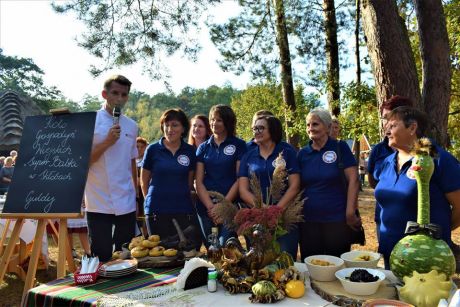This farm represents the establishment of a wealthy farmer from the Region of Radom from the first decade of the 20th century. One of the indicators of the owner’s wealth is the number and type of outbuildings present in the farm. Aside from the buildings typical for every farm, such as a barn and cow shed, one can also find buildings serving as storage units, such as a granary and shed. Every year, the farmer would hire wandering groups of poor, wandering hirelings known as “bandos” to work in the fields. The bandos would receive their daily bread on two flattened stones originating from Niedabyl.
The manner in which they are located (most of the buildings are freestanding) and the separate intended purpose for each of them is a sign of a new style of farm arrangement, which became popular at the turn of the 20th century. Before that time, the number of outbuildings was limited. Usually they were cramped together under a single roof.
The Chomentów homestead consists of:
- Cottage from Chomentów, 1905
- Pigsty from Brzezinki Stare, 1905
- Cow shed from Brzezinki Stare, 1910
- Hay barrack from Radom, 1950
- Barn from Borki, approx.. 1850
- Chaff-cutter from Janiszew, latter half of 19th century
- Shed from Chomentów
- Granary and coach house from Chomentów, 1940
- Dugout cellar from Chomentów, 1905
- Well- reconstruction
- Toilet- reconstruction



